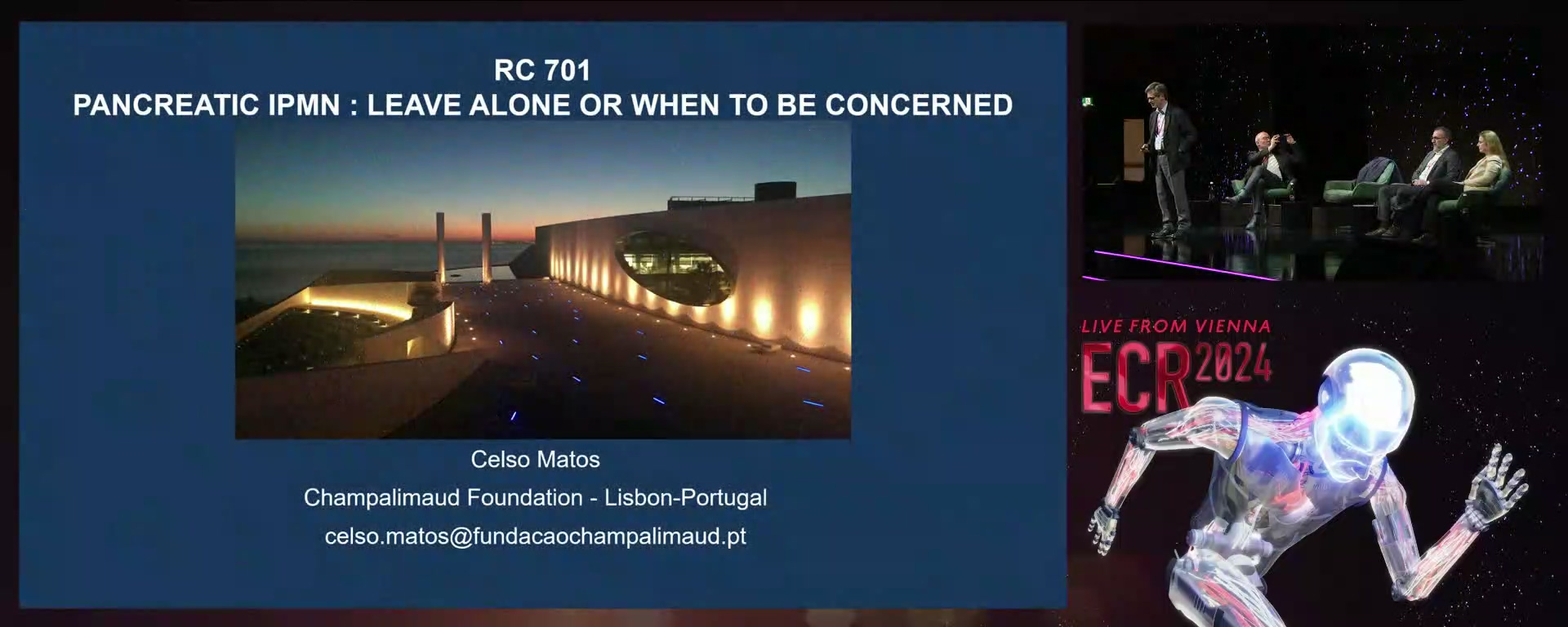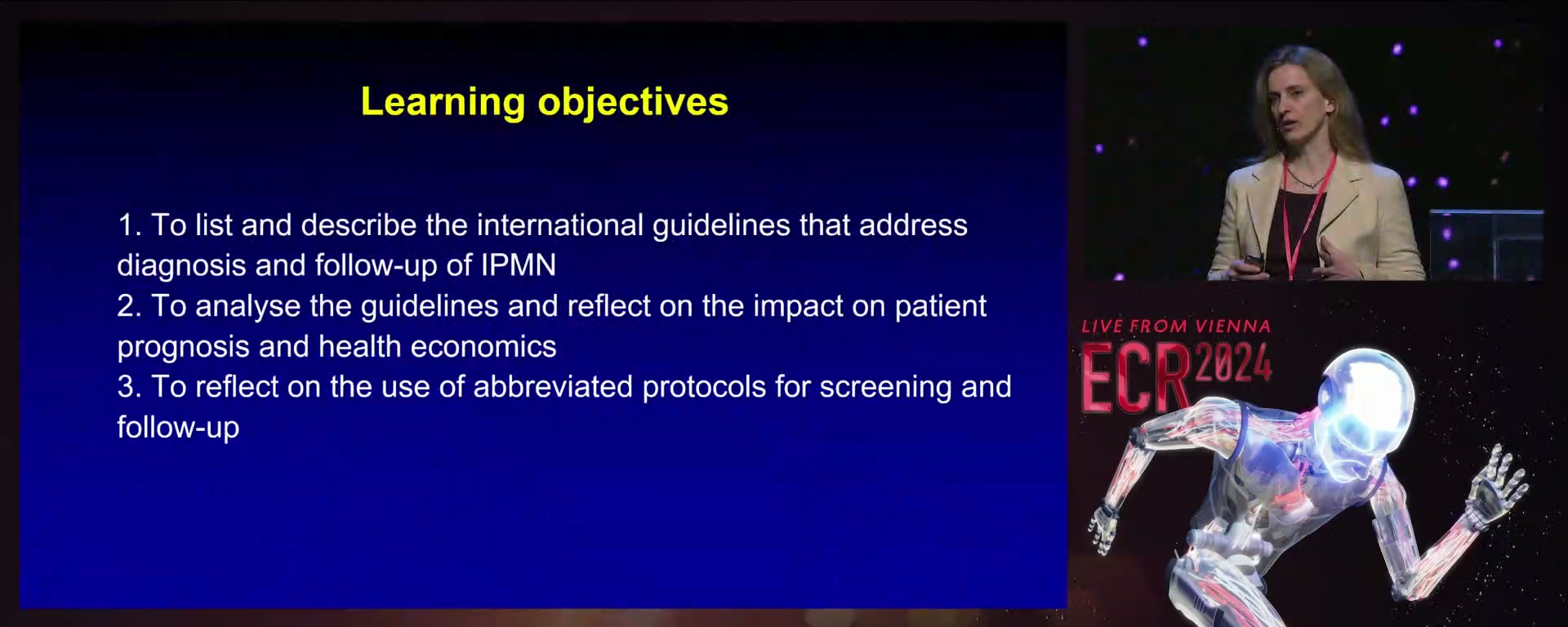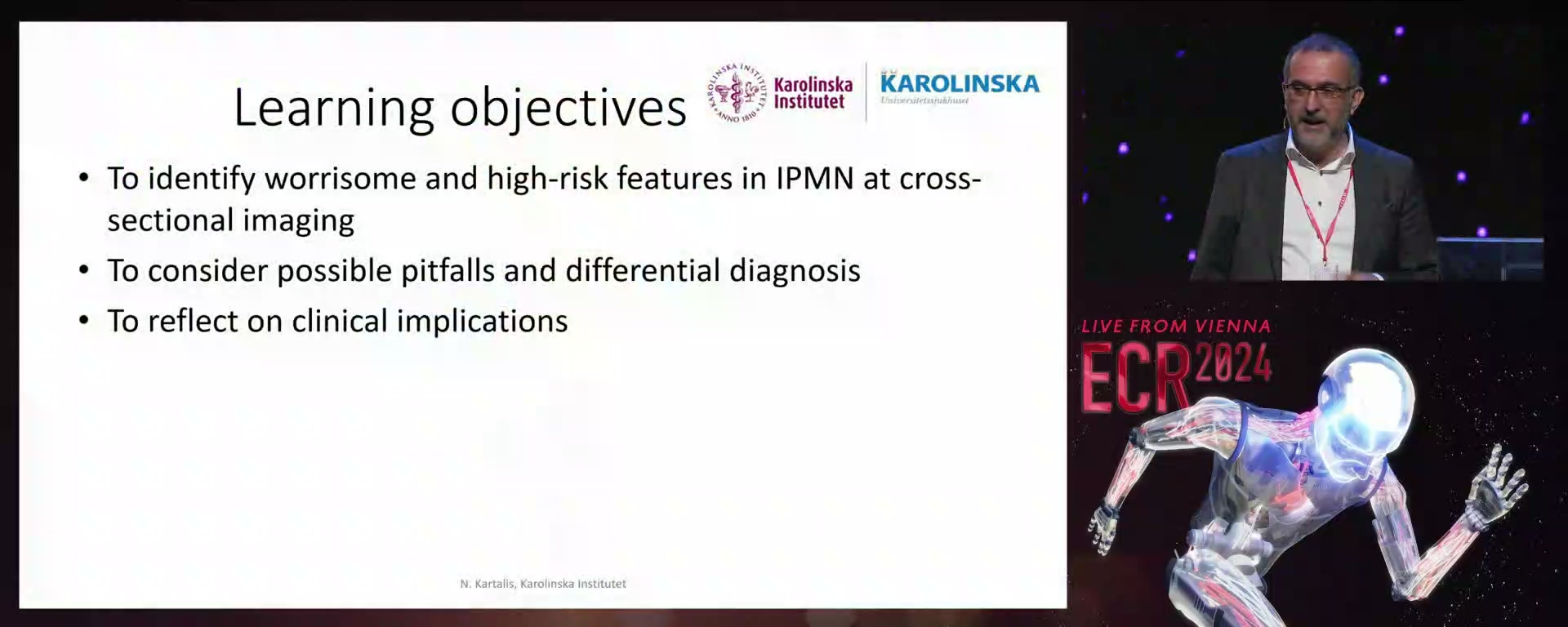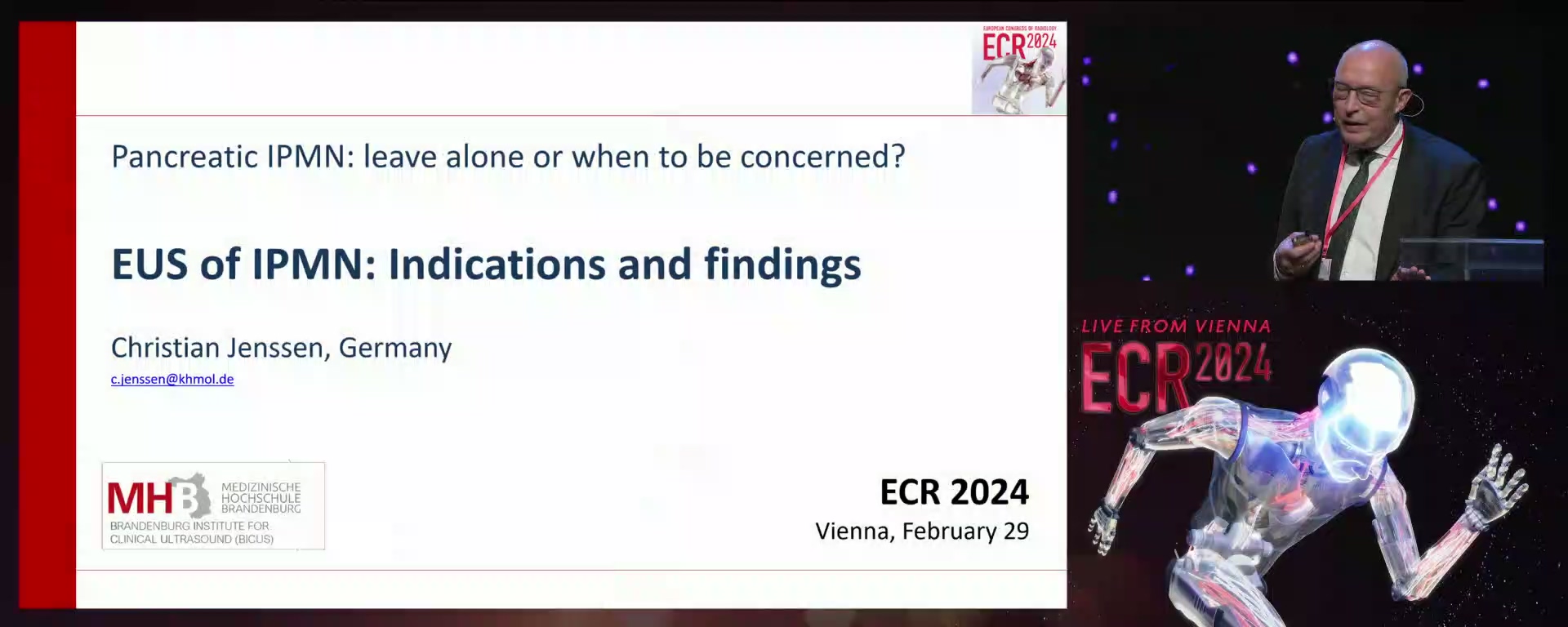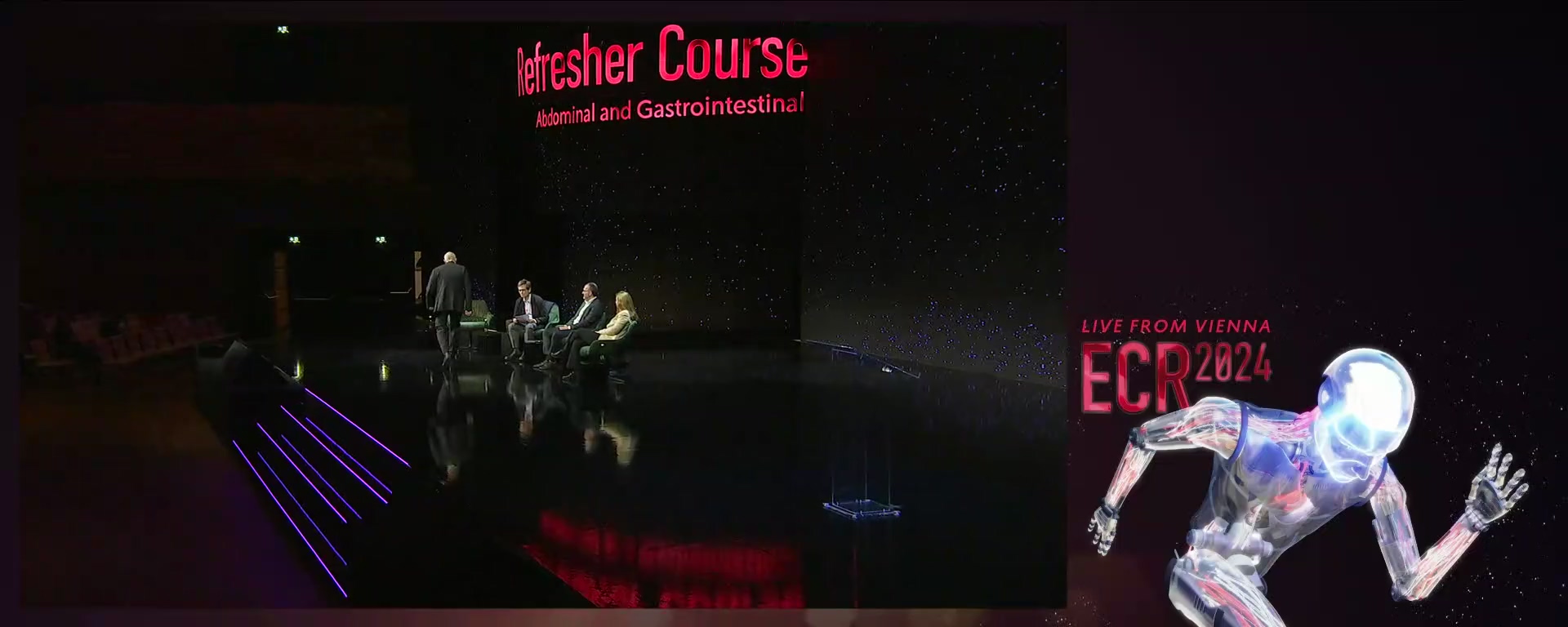Refresher Course: Abdominal and Gastrointestinal
RC 701 - Pancreatic IPMN: leave alone or when to be concerned?
5 min
Chairperson's introduction
Celso Matos, Lisbon / Portugal
15 min
Current strategies in detection and follow-up of IPMN
Giulia Zamboni, Verona / Italy
1. To list and describe the international guidelines that address diagnosis and follow-up of IPMN.
2. To analyse the guidelines and reflect on the impact on patient prognosis and health economics.
3. To reflect on the use of abbreviated protocols for screening and follow-up.
2. To analyse the guidelines and reflect on the impact on patient prognosis and health economics.
3. To reflect on the use of abbreviated protocols for screening and follow-up.
15 min
Worrisome and high-risk features of IPMN
Nikolaos Kartalis, Stockholm / Sweden
1. To identify worrisome and high-risk features in IPMN at cross-sectional imaging.
2. To consider possible pitfalls and differential diagnosis.
3. To reflect on clinical implications.
2. To consider possible pitfalls and differential diagnosis.
3. To reflect on clinical implications.
15 min
Indication and findings in EUS of IPMN
Christian Jenssen, Strausberg / Germany
1. To become familiar with a 4-step algorithm for EUS-based diagnosis and risk assessment of IPMN.
2. To know the conspicuous EUS features of different types of IPMN.
3. To know when to be concerned: how to confirm high-risk stigmata of IPMN on EUS.
2. To know the conspicuous EUS features of different types of IPMN.
3. To know when to be concerned: how to confirm high-risk stigmata of IPMN on EUS.
10 min
Panel discussion: What would be the justification for performing life-long follow-up?
